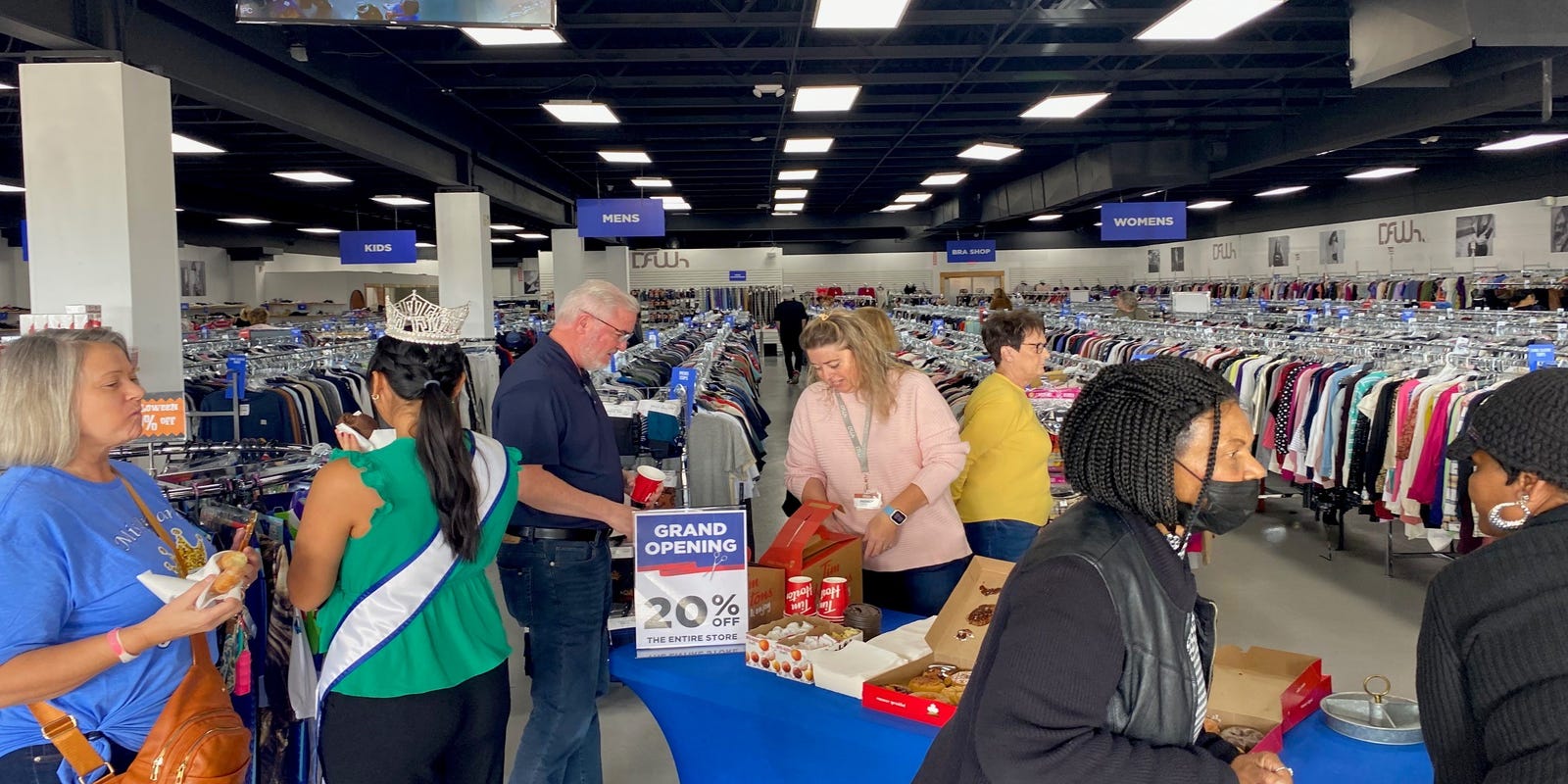Fashion’s dealmakers awoke with a jolt this summer.
Kering inked deals with Creed and Valentino, Tapestry Inc. agreed to buy rival Capri Holdings, Kim Kardashian’s Skims raised new money ahead of a potential IPO and Saks Fifth Avenue and Neiman Marcus started talking, again.

Kim Kardashian’s Skims is looking at a valuation of close to $4 billion in a fundraising round.
SKIMS/STEVEN KLEIN
As fall arrived, Sycamore Partners continued its move to consolidate with its agreement to buy Chico’s FAS Inc., Birkenstock staged its much anticipated initial public offering and more.
It was altogether a lot of activity — especially for a time when economists were projecting recession and belt tightening.
But the economic storm clouds haven’t passed. Inflation lingers, interest rates are high and wars are raging, on top of all the usual complications of running and growing major fashion companies or even smaller designer brands.

A Coach bag for spring 2024.
Don Stahl/WWD
Still, more players are said to be looking at the market — plotting IPOs next year or their own transformative transaction.
To take the measure of what comes next, WWD reached out to the investment bankers who match buyers and sellers. While their answers reflect a still-complicated market and opinions vary, the question was simple:
Will the deal market keep heating up in fashion? Why?

Ben Frost
Courtesy
Ben Frost, global co-head of consumer retail group, Goldman Sachs
We are going to continue to see more deals in fashion and apparel. The benefits of scale have proven to be too great to ignore and shifting consumer impulses create opportunities for some and challenges for others.

Carmen Molinos
Courtesy
Carmen Molinos, global co-head of consumer retail investment banking, Morgan Stanley
Despite a slow first half of the year for overall M&A activity, we have seen a recent wave of luxury consolidation and expect this trend to continue. Scale matters in luxury, and it is all the more important in times of economic uncertainty and an escalating cost environment. I expect strategics to continue to utilize M&A as a tool to bolster long-term growth by diversifying their portfolios to deepen customer engagement, enhance core competencies and expand geographic reach.
Further, even if more expensive, access to debt financing is improving and would therefore expect sidelined financial sponsors to become increasingly more active. Scarcity of actionable opportunities have maintained elevated valuations, and buyers and sellers are utilizing creative solutions to bridge value gaps. I therefore expect luxury to continue to be fertile ground for M&A activity.

Alexandra Soto
Courtesy
Alexandra Soto, chief operating officer, Lazard
It is a real paradox. The fashion industry’s M&A environment is experiencing numerous conflicting trends, with certain factors promoting deal activity and others hindering it leading to significant polarization of interest.
Recent examples of M&A activity in the fashion industry underscore how strategic players, faced with financial challenges and shareholder pressure, have been compelled to reevaluate their brand and category portfolios, as well as their overall strategies. The consolidation trend in this sector began long ago, as large groups built portfolios of fashion and luxury brands to benefit from scale, making it increasingly difficult for independent brands to compete, both digitally and physically in-store experience.
This year, new dynamics have emerged impacting M&A valuation: The impact of inflation on margins, underperformance of some online and physical retailers prompting questions about the optimal distribution mix, softening demand in China, de-globalization of the supply chain among others. With these new challenges come new needs, and recent deal activity demonstrates that the group concept allows for greater agility in responding to a rapidly changing environment.

David Shiffman
Courtesy
David Shiffman, partner and co-head of the consumer retail group, Solomon Partners
The retail sector has been oversold for way too long. Private equity has given up on the sector fearing the “Amazon effect” and the concentration of power of the top 20 retailers. Solomon Partners has written for several years about the top 20 retailers and their size, scale, fortress balance sheets, lower cost of capital and ability to attract talent — all resulting in a concentration of market capitalizations.
Strategics have been focused on organic growth as they have battled over an extended period of time. And brand management companies flourished and became the buyer of choice for many fashion brand businesses. These transactions range from tens of millions to billions of dollars.
Great businesses, with many years left to run, have been overlooked. We anticipate that there will be more branded apparel, footwear and accessory businesses that are sold or IPO’d. Luxury and branded goods businesses that command higher price points resulting in higher margins will be the most attractive.
The rapid shifts in consumer preferences as a result of social media have never been higher. And the connection between brand and customer has never been more important than where we stand today.

Elsa Berry
Courtesy
Elsa Berry, managing director and founder, Vendôme Global Partners
The luxury fashion industry should see more consolidation as scale has become increasingly vital and competition continues to intensify.
However, there are not that many sizable potential targets left. In addition, many small- to medium-sized companies are either struggling or not growing very fast. And many designer-owned companies may not want to lose their independence and become absorbed by a larger multibrand company.
So, the supply side is limited.
And the buy side is becoming concerned with the softening performance of the luxury industry post the pandemic-created bubble: slowdown in the U.S. and in Europe, with disappointing growth in China, and a very volatile macro-economic and political environment.
Numerous uncertainties (high interest rates, still-high inflation, wars, uncertain election outcomes, consumers’ softening demand, companies worsening performances, etc.) create a lack of visibility and a negative investment context.
More recently, the Birkenstock IPO met an unenthusiastic reception, with its share price dipping almost 13 percent in its Wall Street debut, despite stellar performance, scale and significant brand value.
Hence, I don’t feel that the fashion M&A market will be robust in the short term — putting aside distressed situations.

William Susman
Courtesy
William Susman, managing director, Threadstone
In general, I do believe the fashion and apparel deal market is heating up. More a soft opening than a crush of deals.
The market is opening up for a couple of macro reasons. The effects of the pandemic are completely behind us. And while the retail environment is challenging, it is for different, more traditional reasons — consumer demand, rising interest rates and consumer confidence.
Good companies always can get a deal done. And that means strong brands with scale and profitability can find a buyer albeit at a price. This is not a stretch market — it is a balanced one.
The Tapestry-Capri deal and the Kering-Valentino deal are reflective of strong companies with strong brands looking to grow entering into smart financial transactions. A potential Neiman’s-Saks deal would fit into this dynamic if it materializes. These sectors — accessories and luxury — remain coveted. The consumer never has enough shoes and bags and the rich are still rich.
While the market for deals has opened, I see it being selective, not across all areas of retail. Seller expectations need to remain grounded. Buyers are valuing actual earnings, not adjusted run-rates. And leverage needs to be very limited.




